#low serviceberry
Text
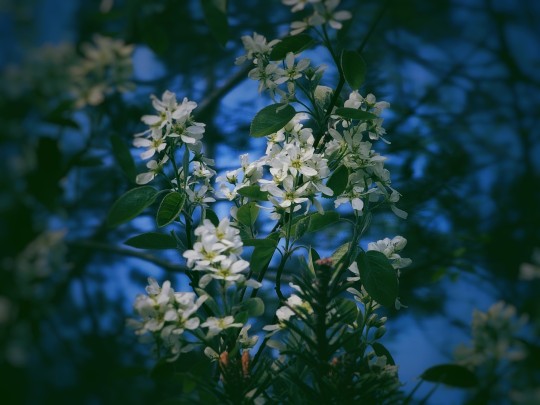

Amelanchier × spicata, the low juneberry
#Amelanchier × spicata#the low juneberry#thicket shadbush#dwarf serviceberry#low serviceberry#juneberry#photography#mine#nature#nature photography#original photographers#flower#white flowers#flowers#flower photography#blossoms#photographers of tumblr#photographers on tumblr
22 notes
·
View notes
Text
What Kind of Plants to Add
This is my sixth post in a series I’ll be making on how to increase biodiversity on a budget! I’m not an expert–just an enthusiast–but I hope something you find here helps!
I’d love to be able to give a quick and easy list of things to add, but frankly I can’t do that. I can strongly encourage you, however, to look at these categories of plants and do further research to discover what’s native to your area, so you can plant things that’ll have the most impact in your particular area.
With that being said, I will mention a few plants as examples. This is in no way, shape, or form me telling you that you have to or even should buy these specific plants. Not every plant works well in every place in every garden, not to even mention across countries. Above all, if you’re wondering what plants you should be adding, I can wholeheartedly say plants that are native to your area--or at least nonnative non-invasive.
Flowers
Flowers are some of the most common ways people work to increase biodiversity in their gardens, and who can blame them? Seeing pops of color out your window, and directly seeing the impact via butterflies and bees visiting the garden? It’s a win-win for us and the wildlife!
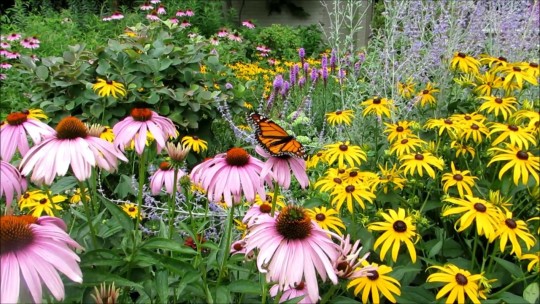
Flowers--especially native wildflowers--are a quick, easy, and cheap way to increase wildlife traffic in your garden. Perennial gardens are more likely to get you the most bang for your buck, as they’ll come back year after year if you treat them well. But don’t dismiss annuals--if you get ones that easily reseed, they’ll eagerly return on their own! If you can, do your best to ensure that the flowers you plant all have different blooming periods--that way, your garden can support wildlife throughout the year instead of for just one brief season.
Flowers are environmental super boosters. Their nectar and pollen can feed insects and birds, their stems and leaves can provide nesting materials for all sorts of creatures, and their seeds are a popular food source among birds at all times of the year.
Climbing Plants
Climbing plants can be fantastic options for maximizing your impact. If you have limited ground space, growing up can provide interest as well as additional habitat for all kinds of creatures.
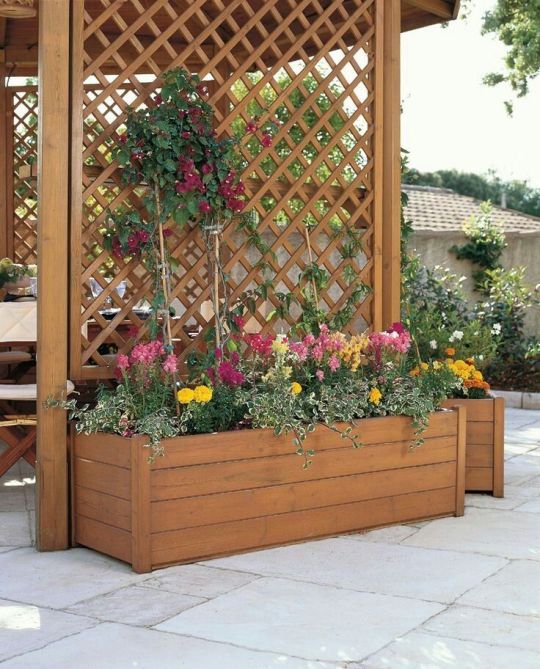
Training plants up a trellis, fence, or bare wall offers food, shelter, and habitat. Trumpet vines, passionflowers, honeysuckles, and more will provide sweet nectar for pollinators as well as nesting and hiding spaces for other wildlife like birds, bugs, and lizards. Do note that in some cases, climbing plants can actually affect the structural integrity of walls and roofs if allowed to climb too much and too far along a house, so be careful.
Bushes/Shrubs
Bushes provide shelter for creatures, which then provides hunting grounds for other animals. Their fallen leaves and petals can be food and shelter for detritivores, amphibians, reptiles, and small mammals--and they also provide good cover for moving around the garden, for creatures who like to stay hidden. They can be a bit more pricey to obtain--unless you get cuttings or seeds and are willing to wait--but they’ll definitely be worth it, and they’re typically low-maintenance once they’re established.
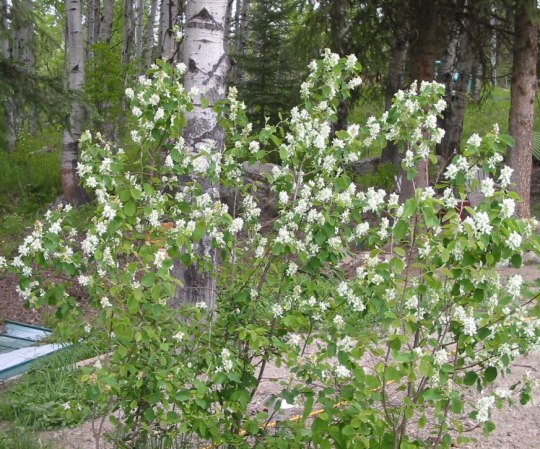
Bonus points if you get a flowering and fruiting bush, like bottlebrush, serviceberry, lilac, or others. This’ll make your bushes not only a place of shelter, but a food source as well--and depending on the kind you pick, may be food for you too! Making a garden border with a series of bushes can be a great option to providing lots of habitat, if you can manage it.
Shrubs with pithy or hollow stems are excellent options for supporting solitary bees. Some examples you could look into are elderberry, raspberry, blackberry, or sumac.
Trees
Trees have a high up-front cost and take awhile to grow, but once they’re settled in place they provide crucial habitat to all kinds of creatures! Insects will be attracted to flowers they may provide, or to nest in the wood. Others may eat the leaves as food, or use them as nesting materials. Birds will perch and nest in trees, and feed off the fruits and seeds and insects that also use the tree. Squirrels also use trees as nesting places, piling up dead leaves into huge clusters to raise their young in, and will absolutely feast on any nuts the tree may provide. Mice, badgers, and more will feast on fallen fruits or seeds, and bats roost in the trunks when given the chance. Detritivores eat fallen leaves and decomposing fruits, providing further food for hunting creatures. Trees can also be good for us--they help block out noise and air pollution, and are the poster child for taking CO2 and making it breathable oxygen. Not to mention they can provide plenty of food for us, too. Nesting grounds, hunting grounds, shelter from weather, and more--trees are, in my opinion, likely to be the best way to boost biodiversity long-term. If you can get your hands on a sapling for cheap and can care for it for awhile, I’d definitely give it a shot! Make sure the tree won’t get too big for where you’re growing it, though--you’ve definitely gotta plan for the long-term before you plant any.
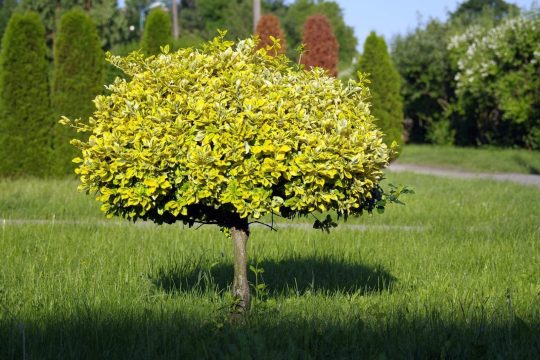
Some trees can be grown in containers. Though they won’t become gigantic branching behemoths, they’ll still do their part to support all the life that depends on them. Growing a tree from seed may take awhile, but could be an easy option to getting one if you have the patience--the trees are more than happy to help you, as they drop tons of seeds and fruit in fall for you to gather.
Groundcover
Bare soil is the enemy of microbial life in the soil, and while small pockets of bare soil can be great nesting places for bees and other insects, having swaths of empty soil should be avoided. Groundcover plants grow low to the ground in a sprawling habit, and will often spread quite easily on their own. This is a great way to provide shelter, keep soil temperatures cool, block out weeds, and give your soil life a chance to thrive.

Sometimes, ground covers don’t even have to be planted in the ground. Shallow-rooted plants like succulents, ferns, and alyssum can be planted into cracks in stone walls, and moss can be planted by making moss graffiti and painting it onto a surface. As with climbing plants, do make sure that you don’t cause extra damage to important walls and housing foundations.
Host Plants
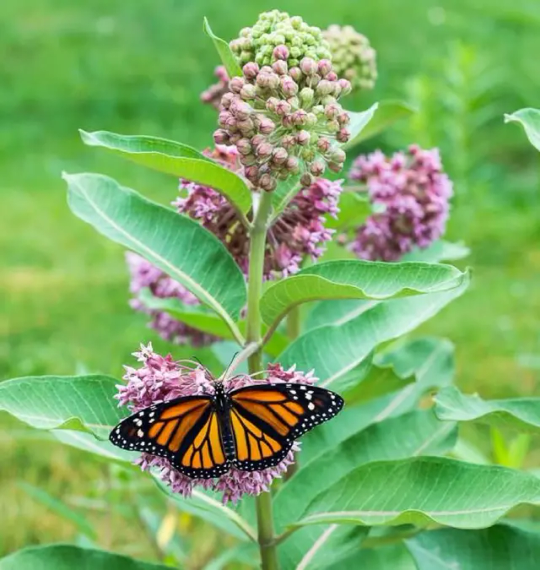
Host plants get their own section, because plants of all kinds can be host plants for different creatures! It’s common to think only flowers can be host plants in the beginning, but in reality, many bushes and trees are host plants to dozens of species of butterflies and moths. Honestly, I feel that factor's not talked about enough. Look up what insects live in your area and what kind of host plants they need, and plant some if you can! Bonus points if you can plant a variety of them--I know that there’s hundreds of kinds of milkweed, each one flowering and leafing up around different times of the year. Planting several varieties of milkweed, then, would provide monarchs with food through several seasons, allowing many more of them to grow up in your garden!
Nectar Plants
Plants that provide nectar to insects is a great foundation to increasing biodiversity! This is, of course, many native wildflowers (and even nonnative wildflowers, though be sure they aren’t invasives who’ll do more harm than good), but many native bushes, vines, and trees will also provide nectar to hungry pollinators!
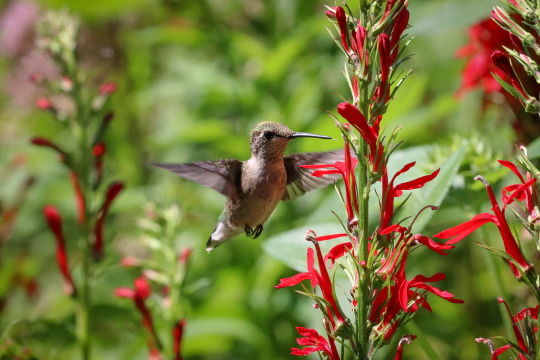
Keystone Species
To be frank, some plants can have a bigger impact than others in a landscape. By all means, every bit helps, but if you want to boost biodiversity quickly there are a few plants that can essentially serve as the backbone of local ecosystems that you can grow in anything from a balcony pot to a small patch of your backyard. These plants can be different depending on where you are, so do your research to find out what would be best to grow in your area. If you can’t get them all? That’s alright! But even hitting just a few of these target species really can do a lot.
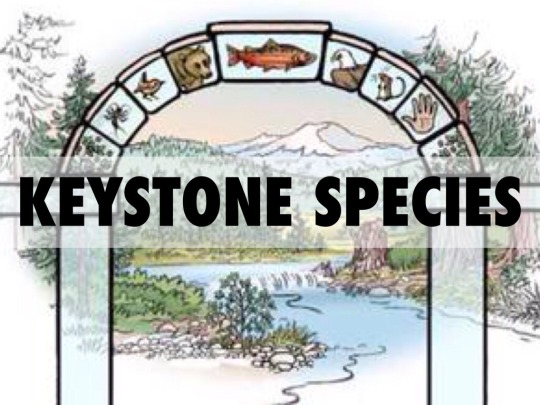
That’s the end of this post! My next post is gonna be about things to keep in mind/continue to do once you get plants in the ground! Until then, I hope this advice was helpful! Feel free to reply with any questions, your success stories, or anything you think I may have forgotten to add in!
#biodiversity#solarpunk#gardening#outdoor gardening#ani rambles#out of queue#the biodiversity saga#sorry its been 2 months since I last posted to this series#I literally have everything drafted out I just got Busy because maannnnnnn animating a grad school capstone project all by yourself....#i should really start using my youtube channel to post my animations but they never feel Done so I just Dont#i dont have as many links in this one because... they weren't in the draft and any tumblr posts that came to mind I couldn't hunt down#either way i hope this was Helpful and Lit and All That Jazz#I might just post the other parts tomorrow so I can stop having that hanging over my head#and so I can get my sources masterpost out there so people can like. see I'm trying my best not to just talk out of my ass#anyways see yall
157 notes
·
View notes
Photo




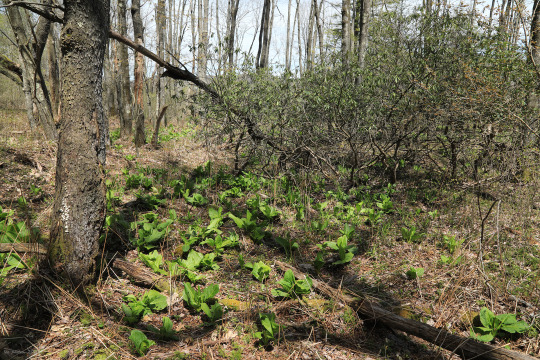
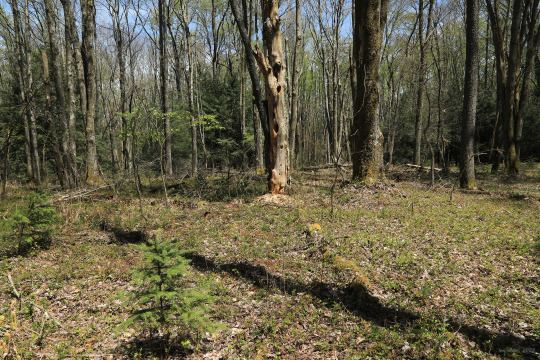


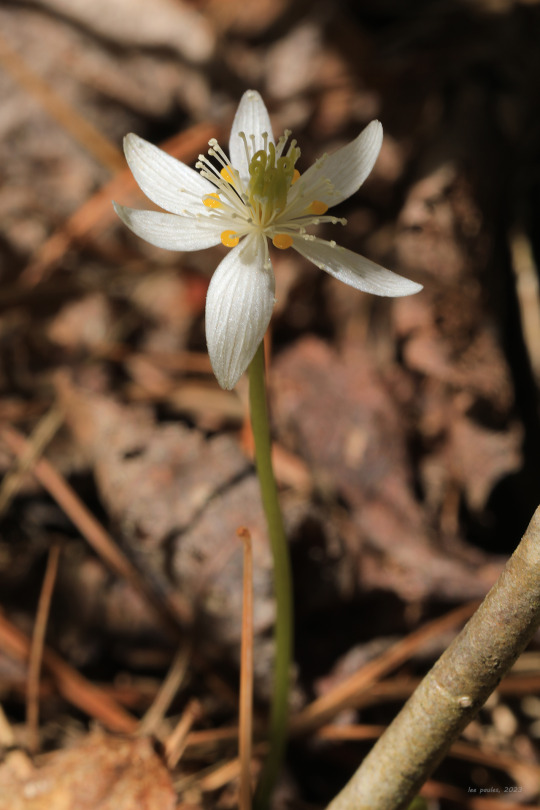
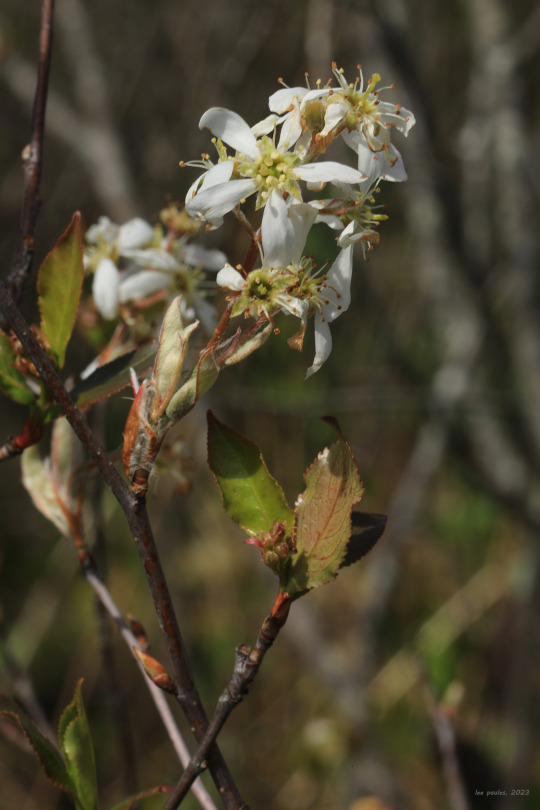
Winter made an encore appearance to the Central Appalachians this past week, with some locations above 3000 feet receiving a foot or more of snow. By Friday, all that nasty cold and freezing precipitation had moved out and spring returned with a vengeance today, with temperatures in the upper sixties to low seventies. It was a perfect day to explore the ancient sphagnum bog at Cranesville Swamp Preserve, whose boreal wetlands community owes its existence to the cool temperatures provided by the frost pocket in which it nestles. From top: small cranberry (Vaccinium oxycoccos) and eastern teaberry (Gaultheria procumbens) grow from a sphagnum hummock; lowbush blueberry (Vaccinium angustifolium); eastern skunk cabbage (Symplocarpus foetidus) growing in a damp spot near the bog’s edge; fringed polygala (Polygaloides paucifolia); dwarf ginseng (Panax trifolius); goldthread (Coptis trifolia); and downy serviceberry (Amelanchier arborea).
#appalachia#vandalia#west virginia#maryland#spring#may#allegheny mountains#bog#peat bog#shagnum#cranesville swamp#cranesville swamp preserve#small cranberry#eastern teaberry#lowbush blueberry#eastern skunk cabbage#fringed polygala#dwarf ginseng#goldthread#downy serviceberry#flora#wildflowers
97 notes
·
View notes
Text
How can native plants enhance my landscaping in Buffalo, NY?
In Buffalo, NY, integrating native plants into your landscaping designs can significantly enhance both the aesthetic appeal and environmental sustainability of your outdoor space. At Redefine Landscaping, we specialize in harnessing the natural beauty and benefits of native plants to create distinctive landscapes that thrive in our local climate.
Native plants are uniquely adapted to Buffalo's specific soil conditions, weather patterns, and wildlife, requiring less water and maintenance compared to exotic species. This resilience not only conserves resources but also reduces the need for pesticides and fertilizers, promoting a healthier ecosystem overall.
From vibrant wildflowers like Black-eyed Susans and Purple Coneflowers to sturdy shrubs such as Serviceberry and Red Twig Dogwood, native species offer a diverse palette of colors, textures, and seasonal interest. These plants attract native pollinators like bees and butterflies, fostering biodiversity right in your backyard.
Beyond their ecological benefits, native plants can elevate the visual appeal of your property, providing year-round interest and complementing the architectural features of your home. Whether you're aiming for a low-maintenance garden, a wildlife-friendly habitat, or a water-efficient landscape, our team at Redefine Landscaping can tailor a design that integrates native plants seamlessly into your outdoor environment.
Discover how Redefine Landscaping can transform your Buffalo, NY property into a sustainable and striking landscape that reflects the beauty of our region's native flora.
For More Details to know,
Visit Us:
https://www.redefinelandscaping.com/
Email: [email protected]
Phone No: ( 716 ) 899-5995
Address: Buffalo NY, Orchard Park and nearby areas
Social Profiles:
https://www.facebook.com/redefinelandscaping https://x.com/RedefineBuffalo https://www.linkedin.com/company/redefinelandscaping/ https://www.instagram.com/redefinelandscaping/
0 notes
Text
Apr 1: wimdy crepe murder
yesterday wasn't too involved, though i did do a rough drainage test on the soil. at least at the very front, it's a lot better than i would expect with the heavy clay we have. maybe the rocks help?
today it was supposed to be dangerously windy, so we set off to pick up our native plant order from herring run nursery in baltimore fairly early. we also covered our baby plants. hang in there lil dudes.

herring run is super cool! it's a native plant nursery run by blue water baltimore, which is an org promoting clean water in the bay. it's small but gets tons of cool plants in and i wish id known about it sooner - there's a few things i ordered online that wouldve been nice to get there.


super excited to have our serviceberry tree! also picked up some low growing sumac, a funky stonecrop, little bluestem, virginia bluebells and pink muhly grass. some are dormant but im excited to see them grow! we also got a rain barrel, which will hopefully save me from having to buy water refills for my fussy baby tropical houseplants.

my flowering quince (seen here with the serviceberry) also came in early! it's so tall! which means we had to get to work removing the crepe myrtle roots. thankfully, there was about a single gust of wind until all the way after dark. a bit anticlimactic.

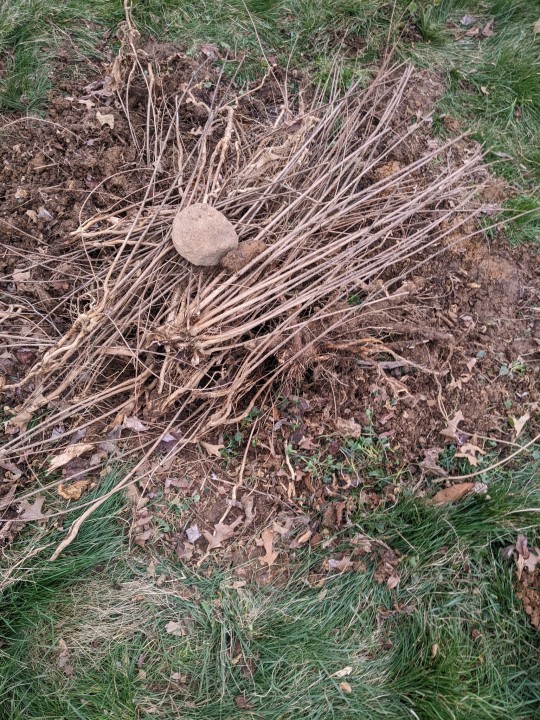
there's like half a stump still in the ground, and the top part is rotted but there's still live roots. im hoping clearing this main section will take care of most of the issue, though realistically, we'll still be getting suckers popping up for a while. the only way to stop them for sure would be to dig up literally half our yard, and while we'd be rich in rocks i think we might also die.
we at least got everything at the surface level out! tomorrow we tackle the big boy and plant our new pals that we didn't want to immediately snap in the wind.
0 notes
Photo




Low shadbush (Amelanchier humilis) has edible, delicious fruit. The correct way to eat the fresh berries is to gather as many as possible into both your hands and to cram them all into your mouth. Then you bite down. I eagerly await the spring for this purpose. They taste like a mix of apples, blueberries, cherries, and grapes. You can also make jam of them or add them to smoothies.
More info on Plants for a Future.
#native Ontario plant species with edible parts#flowering plants#flowers#edible plants#native North American species#plants I want#deciduous trees#low shadbush#serviceberries#Canadian fruit
9 notes
·
View notes
Text
I once read an Amazon review that said "I had no idea that growing my own weed would turn me into someone that's growing everything I can get my hands on"
And... big mood.
#I seriously grew my first cannabis plant about a year ago#I now am growing basically every herb and basic edible you can think of#I have two indoor grow spaces and they're currently both PACKED#I have plants in my windows#and I'm starting to plant stuff outside#which has suddenly become a huge project that will eventually be a food forest#the first phase of my food forest is herbs and stuff from the onion family#this creates a layer of pest deterrent#I'm also starting with a serviceberry tree#next will come basically all the edibles#then the ground cover#the rest will build up over the years#but to start I want to encourage benefitial insects and discourage bad bugs#as well as a ground cover to cut back on the weeds trying to take over the area#which I've spent a lot of time getting rid of#but that's digging them out... which makes it easier for more to take up that space#so I'm going to plant a no mow low water wild 'lawn'#which is mixing ground covers like clover with wild flowers and such#just so there isn't room for the weeds to come in#the clover also traps nitrogen which will increase the fertility of the soil#I'm laughing all the way to the bank at all these people and their fucking lawns#bro... that grass is doing nothing for you but sucking up a lot of water#you could do other things and still have a lawn that you can still walk on and enjoy that takes little to no water#doesn't need to be maintained really and still feels nice and looks great and keeps the weeds out#seriously... unless your lawn is stuff like fescue and bluegrass like drought tolerant grass stuffs... wtf are you doing???
0 notes
Photo

Not the prettiest, but I was tired and low on some ingredients, but I wanted pie. Serviceberries and Black Locust flowers. 🥧 #foraging #foragedfood #wildfood #wildberries #pie #homemade #dessert https://www.instagram.com/p/CPW_aNPpNDB/?utm_medium=tumblr
2 notes
·
View notes
Photo

Soon the serviceberries (or one of their million other names (why does it have so many names? (my theory is that it is because if has edible fruit, that fruit has never been commericalized, had pretty flowers (but not so pretty as to be planted widely), was widespread (but not abundant)))) (clearly my parantheticals have gotten the upper hand here (ach, there I go again)) will bloom, like this Amerlanchier laevis. A solid spring bee plant, visited by many, but never taken to the prom by any one bee species. Plant it if you have a lot of shade,(or just want something lovely) pretty much anywhere that supports spring native bees. The berries taste yummy too (perhaps we need to come up with some mystical healing power developed by indigenous shaman (like the goji berry thing) to really get this plant off the ground). OK, I am going to stop the march of the parens now. Photo and specimen by Helen Lowe Metzman.
#floral#hillbilly#appalachiaspring#vain#kingdom#bream#vernal#spring#overtones#mandible#orate#empathy#figurative#droop#usgs#kelp#surfinsta
32 notes
·
View notes
Note
How did you get into foraging? Is it something you learned from your parents? I would love to try it but I live in the city and it sometimes feels like so much effort to go out to the forest and stuff
My parents heard a thing on NPR about foraging and mentioned it to me, which did spark my current interest, but I did grow up with seasonal hunting for chanterelles (mushrooms) in the park, and I am now hearing that my parents did more of that kind of thing before they had kids. (Apparently they once had a wild mushroom tasting party, with like 16 different kinds?) I’ve also gradually been realizing over the past few years that it’s important to my mental health to get outside and get some nature in my life, as much as I love being attached to a computer all the time.
I’m definitely still learning but I’m having so much fun with it. I live in the suburbs (both currently for the pandemic and in my “normal” life) with some pretty good park access, although some nice parks do forbid foraging. Urban foraging is definitely a thing (and so many weeds are edible), but it can be tricky in terms of soil quality/pollution and the potential for chemicals. If you have a yard, that can be helpful because you know whether anything’s being sprayed or not! I started out in my yard in MD with purple dead nettle and field garlic. There are also plants that get used in landscaping, like we have a lot of apple, crabapple, and hawthorn trees along our public transit lines, and serviceberry trees and varieties of mint around some public recreation areas. (Fallingfruit.org can be helpful in terms of fruit trees that might be on public land in urban/suburban areas, although sometimes it’s outdated or just no one in an area has contributed any info.)
I was also very lucky when starting out that my area in MD/DC area has multiple “food forests” that local governments started specifically to grow food that is available to the public (in a permaculture low-maintenance way). (Where I am currently in OH, that’s not a thing.) I don’t know what your city is like, but there might be Meetup or Facebook groups of people who forage in your area who could give tips. And maybe sometimes a trip out to the woods could be effort well spent as a mini-getaway?
2 notes
·
View notes
Text
GARDEN NOTES (personal)
September 22, 2019 (first frost expected in a few days)
Flower of the year- Mallow - need 2 or 3 more in side shade bed in front of hollyhocks. -Beautiful all season long.
FRONT FLOWER BED- Don’t let daisies take over. Hostas? More mid-summer blooms.
Super Early Spring - Violets, Queen of the Night Tulips, Then Checkered Lillies. Early Spring- Columbine, Bleeding Heart. Late Spring - Peonies, Daphnie Shrubs Summer - Daisies, Poppies. Later Summer - Stella D’Oro Lilies, giant lily on corner. -Spiderworts- from Early Spring to Late Summer.
DECK-
Nasturtiums - from seed, only white and maroon. (Day and Night Mix) - No Yellows and Oranges on the deck next year.
Include:
Lots of Borage - easy to grow from seed - collect seeds this fall.
Chives - in medium pot- has reseeded consistently.
Snap Dragons
Fuzzy light Purple flower I can’t remember the name of - blooms all season.
Flowering Maple - Attempting to overwinter inside. Likes Second hanging basket on the sunny side.
Pansies- In long flower box in front.
Heliotrope - only likes the shady side of the front deck. Attempting to overwinter giant one and 2 small ones in bedroom.
Tomatoes- Husky Cherry Tomato- very compact, early fruit, abundant.
Early Girl - in large pot in corner. early fruit - not super flavorful but early and abundant.
Morning Glories and Moon Flowers - in larges pots. on deck and back trellis. plant seeds early.
Fuchsias- outside kitchen window got perfect light and water with deck drip system. Buy more plugs from Marchie’s and put in triple hanging basket on dark side of deck. - Try to special order blue fuchsias. attempting to overwinter.
Large Pots - Morning Glories, Moonflowers, early girl tomatoes, yellow pear tomatoes.
Medium Pots - Husky cherry, Datura, Brugmansia (Keep on pedestals to protect cats.) Peppers, Borage, Basil, try Artichokes, Lettuce did well and had no bug damage.
Small Pots - Fuzzy Purple thing (full sun,) Pansies (shade), Four o’clocks, etc.
Sun Hanging Baskets- Vervain (purple)
Don’t try to grow eggplants in containers. Don’t grow onions on the deck. In early spring, drip system set to 5 minutes a day. In Summer, switch to 10 minutes a day. All sprinklers in backyard set to 20 minutes a day.
UNDER BEDROOM WINDOW BED - Add a Japanese Maple.
HOLLYHOCK BED - no Brassicas - not enough light and bug problem. Add 2 rosa woodsii, 3 mallows, 10 hollyhocks to fill out back and corners. Try to spread Motherwort. No Elephant Ears - bulbs didn’t sprout until very late. Add Primroses to front. Add more mid-season bloomers. Add cornflowers, pansies, snap dragons, and four o’clocks. Dill reseeding on right side.
FOXGLOVE BED - keep as is. Spread Foxgloves to other side of gate.
Around Ft. Peck - Sugar Snap Peas, snow peas, and Kentucky Wonder Beans in separate giant pots - more towards shade. Don’t forget there’s a hops plant in sun area. Kale and nasturtium in front of peas and beans.
Don’t grow tomatoes from seed. They are successful, but it’s easier and ultimately cheaper to get them at Lowe’s.
Tomato varieties - Yellow Pear - highest performance (though it was in the most ideal spot.) Mr. Chocolate Stripes? my favorite flavor. Give good spot to next years. Super Sweet 100 - Ed’s favorite for flavor - prolific and very sweet. Chickens also love. Early Girl Bush Tomato- excellent production early ripening on deck. Grew well in large pot on deck. Lemon Boy - excellent production with ripe fruits mid season. Juliette - delicious and pretty but did not turn red during growing season. Cherokee Purple - too ugly and not very tasty - don’t plant next year. Husky Cherry - only needs medium pot - prolific, delicious, earliest ripe.
MAIN GARDEN -
Birdhouse gourds barely made fruit by first frost.
Mini pumpkins did the best.
giant pumpkin did not fruit in time.
Zucchini and cucumber - did okay but not amazing.
asparagus - 2nd year. - lived and look like dill growing around lilac tree.
decorative gourds - only 2 tiny fruits by first frost in side bed.
Back row - back trellis. - No big squash. Giant spaghetti squash is too much for it. - do mini pumpkins next year.
Middle Row - tomatoes only.
Front Row - Eggplants.
No Basil in main garden - bugs and needs more water. grow a lot more on deck. Cilantro don’t forget to grow on deck this year.
nasturtium and marigolds in and around.
Squash - need spot in middle of yard - . Haven’t seen any butternut squash come to fruition. Get legit Dill’s Atlantic Giant. Mini pumpkins growing very well-- perhaps add to back row next year.
SIDE GARDEN - Need more heavily composted. Only one back row. Perhaps save for climbing kiwi plants. Maybe green beans or peas.
FULL SUN HERB BED - sage, thyme, lemon thyme, oregano, lavender - all coming back. Spring - queen of the night tulips. Sweet William. - no room to add anything else.
Barrel - chocolate mint
Old BUNNY PARADISE - regular mint. John Creech Sedum. Strawberries. - make burning bush area graveled. Make border bed of strawberries with stepping stones. Put up mason bee house near that area. Make mud area for mason bees. chocolate mint in barrel.
MOSTLY SUNNY FLOWER BED - back row clone of grandma’s red climbing rose, Bolero pinkish white rose. Hazelnut tree, Serviceberry, Olympiad red rose, All-American Pink rose. Front -Red Patio rose Oregano, thyme, Primrose, Lupine, Cosmos, Phlox - stop trying to grow artichokes and other vegetables here - bugs are too bad. Next year - add larkspur to back row. More primroses. - extend along back trellis.
Between flower beds - jefferson filbert, native spirea? - think it needs more sun or something. Looks crappy in the mid-summer.
BACK TRELLIS AREA - Maple, Rowan, Chokecherry, 4 giant thuja. 5 silvervine climbers. Honeysuckle. - Maybe try Clematis. - not liking any other area in the yard. added bluebird rose and light pink rose.
bittersweet nightshade - super poisonous but pretty - should rip out in case chickens try to eat.
start indoors- borage, nasturtiums, four o clcoks, giant pumpkins
Datura - no more either giant white or small purple -- too dangerous with all the animals around - hard to keep control of.
1 note
·
View note
Photo

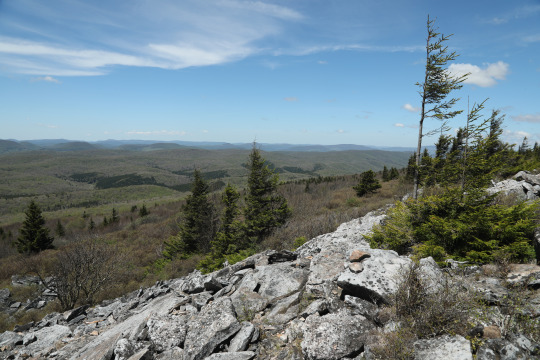

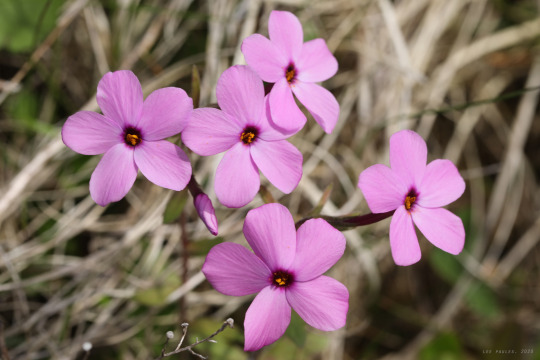

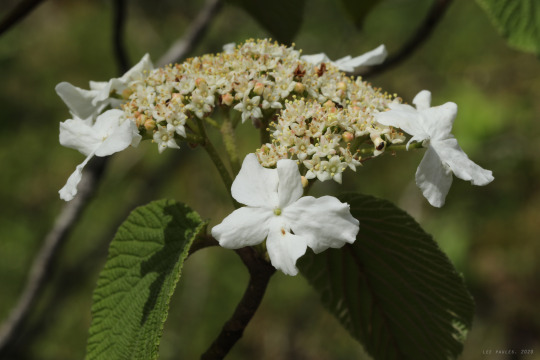
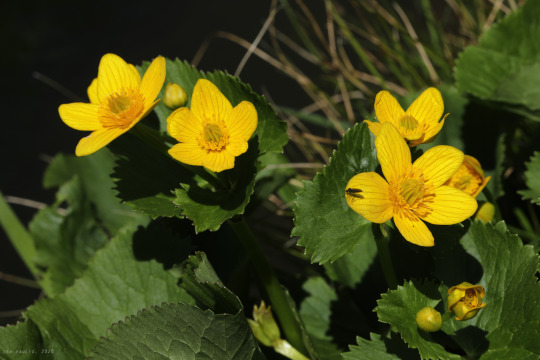
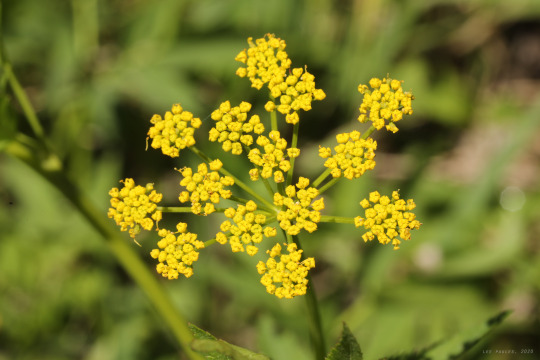


The allure of a beautiful, warm spring day in the mountains is too much for me to resist, even when most of the touristy places in the Monongahela National Forest remain on lock-down. The trails around Spruce Knob and Seneca Creek Backcountry were basically mine alone to enjoy. Among the small treasures waiting to be discovered (from top): spreading Jacob’s ladder (Polemonium reptans); downy phlox (Phlox pilosa); Allegheny serviceberry (Amelanchier laevis); hobblebush viburnum (Viburnum lantanoides); yellow marsh marigold (Caltha palustris); golden Alexanders (Zizia aurea); and pink lady’s slipper orchid (Cypripedium acaule). Incidentally, the afternoon’s peace and quiet was shattered late in the day by a pair of F-22 Raptors, presumably from Langley Air Force Base, practicing low maneuvers over the mountaintops. Strange times.
#appalachia#vandalia#west virginia#monongahela national forest#spruce mountain#spruce knob#pink lady's slipper orchid#cypripedium#golden alexanders#zizea#marsh marigold#caltha#hobblebush#viburnum#allegheny serviceberry#amelanchier#downy phlox#phlox#spreading jacob's ladder#jacob's ladder#polemonium#flora#spring#wildflowers#allegheny mountains
38 notes
·
View notes
Text
Garden Report 19.8.04
Love it when I get help that hates certain plants. In this case: Ivy, yarrow and Himalayan blackberries. Harness that and it makes short work of noxious plants!
Had to stop with the trimming of the plum as that too much fallen fruit and the wasp/yellow jackets were just too aggressive. Do that either very late or very early in the day and clean up the fruit mess.
During trimming saved enough to get some soft wood cutting. I don’t know what I will do with them -- maybe give them away of sell them at the local farm stand.
Having problems conveying trimming of topiaries that have grown out of bounds so I don’ t know -- pause and think instead of my first jerk knee response of whack it back and start again. I really want on those ladders!
We killed the chipper now have to decide to buy another cheap-o or just let it sit. I don’t have the patience nor the finances but maybe the compromise is taking the brush to the landfill where they have a green dump. Another thing to ponder -- I’m sure the situation will force the action one way or another.
All my carnations/ pinks, as have the lambs ears, have died. Most of my campions have died. I don’t mean died back but have given up. We took out the second/spindly gingko that was not doing well and was diseased to give more space for the first. I didn’ t plant them but I do know of the people who did and felt a little bad as it was a symbolic planting but knowing one person of the couple has died and the other in institutional care and those that knew the couple have gone away, it relieved a little of the guilt but I still was like ‘oh, dear …” .For the sake of the stronger tree, it needed to be done.
The weather is driving me crazy. It is like overnight I have powdery mildew and what I suspect as black smut. The makings of a Horror film? IDK. Sounds a little pornographic when down at the local nursery “yes, I have a bad case of smut! got any oil?”
I hate to end on that note so I am going to give you a new harvest report. We are now taking in some of the red flesh apples. I believe they are the Pink Pearls. The tays are putting out another flush and the roses are giving a repeat performance! Really need to treat those ladies nice since they are working so hard this time of year! Will have to go down to the hydroponic store and see what sort of fancy volcanic trace minerals they have. Also coming in is more cherry toms, zuc and serviceberries. The blue berries, alpines, raspberries are pretty much played out. The huckleberries are giving a little but they are so unhappy where they are, as part of a low hedge system. Play on moving them this winter. Plans, plans and more plans! I could do this full time and never get caught up!
#catholic gardener#gardening#dead plants#overcrowding plants#garden disease#smut#powdery mildew#trace minerals#roses#berries#soft wood cuttings#toparies#harvest#vegetables#garden plans#fruit
1 note
·
View note
Text
Protein Harvest Muffins
Because I will almost certainly forget most of this recipe, and because someone might have similar dietary needs to my household and want to try, I’m putting this here. My mom is Type 1 diabetic, so her life is easier if her muffins are low-carb and high-protein.
Adapted from Scrummy Lane’s Greek Yogurt Blueberry Muffins recipe.
Makes 22-24 muffins, approx. 16 grams of carbohydrates and 5 grams of protein per muffin (as many carbs as a slice of bread and as much protein as a medium egg).
Ingredients
Dry ingredients
2/3 cups white flour
2/3 cups whole wheat flour
2/3 cups almond flour
½ cups protein powder (I used unflavoured whey protein)
1 cup rolled oats
1 ½ teaspoons cinnamon
½ teaspoon allspice
1 tablespoon baking powder
½ teaspoons baking soda
¼ cup white sugar
¼ cup brown sugar
1 ½-2 cups saskatoon berries (/serviceberries/juneberrries. You can use blueberries here too, but err on the 1 ½-cup side of things since they have more moisture.)
1 large apple, peeled, cored, and diced small
1 cup chopped walnuts
Wet ingredients
3 eggs, lightly beaten
2/3 cups low-flavour oil such as canola or olive
1 cup plain Greek yogurt (vanilla is fine, but you may want to adjust your sugar accordingly)
¼ cup milk
1 ½ teaspoons vanilla
½ teaspoon maple extract (optional but fun)
Instructions
Preheat the oven to 190C/375F.
Combine the dry ingredients in a medium bowl.
Combine the wet ingredients in a larger bowl.
Add the dry ingredients to the wet. Stir until just combined.
Spoon the batter into muffin cases placed in muffin pans. Bake for 17 to 20 minutes or until a toothpick pushed into the centre comes out clean.
Cool for 20 minutes, then store in an airtight container.
2 notes
·
View notes
Photo
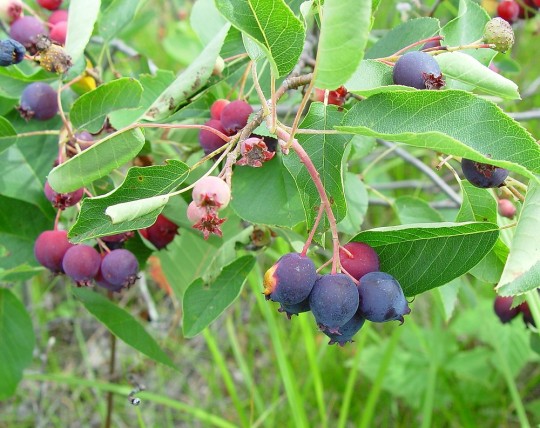
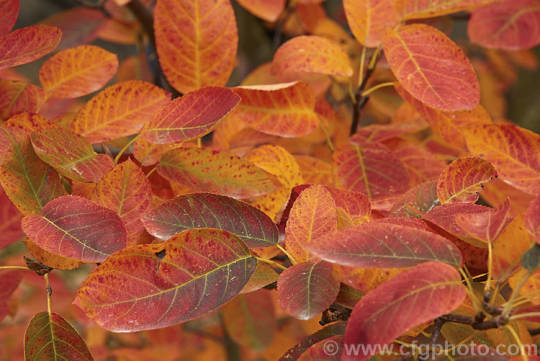

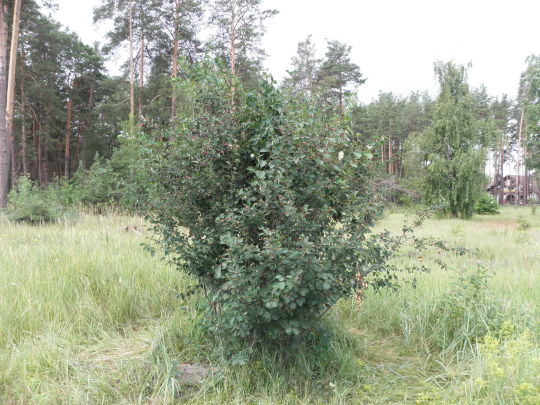
Low juneberry (Amelanchier spicata) has edible, delicious fruit. The correct way to eat the fresh berries is to gather as many as possible into both your hands and to cram them all into your mouth. Then you bite down. I eagerly await the spring for this purpose. They taste like a mix of apples, blueberries, cherries, and grapes. You can also make jam of them or add them to smoothies.
More info on Plants for a Future.
#native Ontario plant species with edible parts#deciduous trees#flowering plants#flowers#edible plants#native North American species#plants I want#low juneberry#dwarf serviceberry#pigeon berry#thicket shadbush#serviceberries#Canadian fruit
0 notes
Photo


America’s Love of Male Trees Could Be Why You’re Sneezing Right Now 😷
More diversity in city trees would probably be a good thing.
Atlas Obscura Sabrina Imbler
One day in April 2019, the residents of Durham, North Carolina, saw the sky turn a peculiar but familiar shade of chartreuse. Enormous clouds of a fine, yellow-green powder engulfed the city. It looked, and felt, like the end of the world. “Your car was suddenly yellow, the sidewalk was yellow, the roof of your house was yellow,” says Kevin Lilley, assistant director of the city’s landscape services. Residents, quite fittingly, called it a “pollenpocalypse.”
Male trees are one of the most significant reasons why allergies have gotten so bad for citydwellers in recent decades. They’re indiscriminate, spewing their gametes in every direction. They can’t help it—it’s what evolution built them for. This is fine in the wild, where female trees trap pollen to fertilize their seeds. But urban forestry is dominated by male trees, so cities are coated in their pollen. Tom Ogren, horticulturalist and author of Allergy-Free Gardening: The Revolutionary Guide to Healthy Landscaping, was the first to link exacerbated allergies with urban planting policy, which he calls “botanical sexism.”
In trees, sex exists beyond the binary of female and male. Some, such as cedar, mulberry, and ash trees, are dioecious, meaning each plant is distinctly female or male. Others, such as oak, pine, and fig trees are monoecious, meaning they have male and female flowers on the same plant. It’s easy to identify female trees or parts—they’re the ones with seeds. And yet more, such as hazelnut and apple trees, produce “perfect” flowers that contain male and female parts within a single blossom. But while both monoecious and male dioecious trees produce pollen, Ogren claims the latter are primarily to blame for our sneezes and watery eyes.
Ogren has been talking about this botanical misogyny for over 30 years. After buying a house in San Luis Obispo with his wife, who suffers from allergies and asthma, Ogren wanted to get rid of anything on his property that might trigger an attack. He began examining the neighborhood, plant by plant, when he noticed something unusual: All the trees were male.
At first, he thought this pattern may just have been a strange quirk of one city. But when he studied frequently landscaped plants in other cities, he noticed the same thing: males, all the way down. “Right away I started realizing there was something weird going on,” he says. While tracking down the origin of this trend, Ogren stumbled upon perhaps the first trace of sexism in urban landscaping in a 1949 USDA Yearbook of Agriculture. The book advised: “When used for street plantings, only male trees should be selected, to avoid the nuisance from the seed.”
Urban forestry’s apparent sexism seems to boil down to our distaste for litter. The USDA reasoned that tiny allergenic spores are likely to be blown away by wind or washed away by rain, making pollen an easier civic task to manage than, say, overripe fruit or heavy seed pods that would need to be cleaned up by actual humans.
The preference indicated by the USDA recommendation is one element of the story—the other is something more tragic, from an arborial perspective. In the first half of the 20th century, lush, hermaphroditic, not-so-allergenic elm trees towered over many American streets. But in the 1960s, a virulent strain of Dutch elm disease, a fungal illness spread by the bark beetle, stowed away on a shipment of logs from Britain. The fungus wiped out some of American cities’ longest-lived trees and left many streets almost entirely devoid of green or shade. By 1989, an estimated 75 percent of North America’s 77 million elms were dead, according to The New York Times.
City planners and landscapers repopulated the nation’s barren, sun-scoured streets, according to USDA guidelines, with more than 100 new varieties of maple clones, Ogren says, all male. Over the years, male willow, poplar, ash, mulberry, aspen, and pepper trees joined them. As these trees matured, they shed increasing quantities of pollen. Nurseries began selling more male plants, too, in part because it is easier to clone an existing tree than to wait for males and females to pollinate each other naturally. Now, it’s not just trees and shrubs, but ornamental plants sold in urban nurseries that skew male. “Botanical sexism runs deep,” Ogren says.
In a cruel kind of irony, if urban landscapers had prioritized female trees in the same way, neither pollen nor unsightly seeds or fruit would be much of an issue. “If they had done it the opposite and planted hundreds of female trees with no males, it would have been just as sterile and tidy, without any pollen,” Ogren says. “Female trees don’t make fruits or seeds if there are no males around.” A large tree will scatter the majority of its pollen within 20 or 30 feet from its roots, Ogren says, so relatively isolated female trees simply wouldn’t bear much fruit.
Another argument proffered against female trees is that certain ones can produce an unpleasant odor. For example, when a lady gingko tree is in heat, it produces an odor not dissimilar to rotting fish or vomit. Ogren cedes this point. But if a city planted only female gingkos, decreasing the chance of fertilization, there would be neither pollen nor its infamously noxious postcoital odor, he says.
Ogren sees gingko gametes as the far greater threat. Unlike almost every other plant, gingko trees produce motile sperm, capable of swimming in pursuit of germination. Where human sperm each have a single tail, or flagellum, gingko sperm have around a thousand. “Once the pollen gets in your nose, it will germinate and start swimming up there to get to where it’s going,” Ogren says. “It’s pretty invasive.”
To guide cities to plant less allergenic trees, Ogren developed the Ogren Plant Allergy Scale (OPALS). The scale rates plants from 1–10 based on their allergy potential. But while certain institutions, such as Ogren’s hometown of San Luis Obispo and the California Public Health Department, have consulted OPALS while landscaping new developments, cities have been generally slow on the uptake. “It’s much harder to make changes when everything is already planted,” Ogren says. “Nobody wants to cut down trees.” Instead, Ogren wants cities to replace dead or dying trees with low-allergy options, such as hawthorn, mountain ash, and serviceberry trees. In certain cases, such as around daycares and hospitals, Ogren advocates actively removing extraordinarily allergenic species such as male elder, yew, and mulberry trees. (For most people, urban allergies are a seasonal nuisance. But for vulnerable populations, such as children or adults with respiratory conditions, they can be much more serious—even deadly.)
Most of Ogren’s current battles are hyper-local. He recently walked by a children’s center in Santa Barbara where a massive Podocarpus tree (a 10 on OPALS) was planted by the entrance. “It had so much pollen that if you flicked your finger on a leaf, a huge cloud would spurt out,” Ogren says. “So now I’m in a fight with the city of Santa Barbara.” Ogren’s proposal isn’t to chop down the tree but to have it regularly cut back, which would slow pollen production. In comparison, female Podocarpus trees produce a fruit around the size of an olive—and are a 1 on OPALS.
Though the biology behind Ogren’s idea passes muster in the field of urban forestry, many experts shy away from his terminology. Paul Ries, the director Oregon State University’s College of Forestry, sees botanical sexism as just one arm of the larger, historical problem of lack of diversity in urban forests. “Anytime we plant an overabundance of one type of tree, whether it is a single species, a genus, or, in the case of so-called ‘botanical sexism,’ male trees, there are bound to be problems,” Ries says. He cites the downfall of species that were widely and homogeneously planted, such as Bradford pear and ash trees, the latter of which are fighting a losing battle against an invasive, wood-chomping beetle called the emerald ash borer.
Still, Ries believes Ogren is on to something, adding that he’d like to see more research on the unintended effects of over-planting male trees. “I just wouldn’t call it sexism. Ascribing a real-life human problem to the botanical world might seem like we’re trivializing what humans, particularly women, face,” he says.
Terminology aside, the problem shows no signs of getting better. Unsurprisingly, climate change isn’t helping. According to a recent study in Lancet Planetary Health, the increase in extreme temperatures contributes to more potent allergy seasons. Summers come earlier and last longer, and certain species, such as cypress and juniper, have begun blooming again in the fall, Ogren says. In Durham, Lilley says he’s never seen anything as monumental as April’s pollen clouds in the city before. While it’s hard to say if the yellow sky was directly linked to climate change, pollenpocalypses will only become more and more common. It’s easy to see these clouds as freak occurrences—like a megadrought or superstorm—but they may be a sign of things to come.
Durham is far from the most pollen-polluted city in America. That superlative belongs to Tulsa, Oklahoma. (Durham ranks 67th, according to a 2018 report from the Asthma and Allergy Foundation of America.). But Durham now has the unusual potential to radically diversify the makeup of its botanical residents, as the majority of its trees are approaching their twilight years. In the 1930s and 1940s, the city’s public works department oversaw a massive urban forestation effort that saw thousands of willow oaks planted within the city limits. Though they thrived for nearly a century, the oaks are reaching senescence. Under Lilley’s guidance, Durham has begun to reforest with a more diverse array of trees, including pines, maples, elms, dogwoods, and cherries.
Durham has no official guidelines for what kinds of trees can or will be planted, though the city does ban female gingkos. “The sex of the tree isn’t something we pay attention to,” Lilley says, adding that he hadn’t heard of the concept of botanical sexism. But he says Durham makes an effort to plant mostly monoecious trees, or ones with both male and female parts.
Ogren sexes trees wherever he goes; he can’t help it. He recently visited Sacramento for a conference and saw a dozen cedar trees planted by the capitol building—all males. On a recent trip to London, he spotted a veritable forest of male sweet bay trees. He was asked to give a lecture on botanical sexism in Christchurch, New Zealand, where he spent the entire day hunting around the city for a single female Podacarpus totara tree (spoiler alert: males, the lot of them). “A big part of the problem is most people don’t know much about trees, and think, well, trees are good and no trees are bad,” he says. “But trees are just like people, they have a multitude of differences. Some trees are human-friendly, and some are just the opposite.”
https://getpocket.com/explore/item/america-s-love-of-male-trees-could-be-why-you-re-sneezing-right-now?utm_source=pocket-newtab
1 note
·
View note